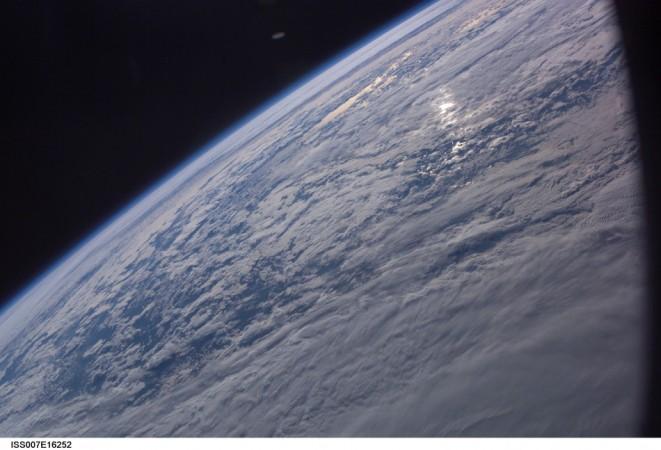
European scientists have discovered a new alien planet orbiting a young star about 300 light years from Earth. The exoplanet, HD 95086 b, was observed directly by the European Southern Observatory's (ESO) Very Large Telescope (VLT) in Chile.
HD 95086 b orbiting its parent star, HD 95086, is estimated to have a mass of four to five times that of Jupiter. In a photo released by the ESO, the exoplanet is shown circling the star in infrared light. While the star has been removed from the image, the planet is shown as bright blue dot in the left bottom of the picture.
Nearly 1,000 exoplanets have been detected indirectly through various means such as radical velocity and transit method.
For example, NASA's Kepler mission has found all the planets outside our solar system using the transit method, wherein a dip in the brightness of the star shows that a planet has passed in front of it. According to ESO scientists, so far only 12 exoplanets have been discovered directly using a telescope, reported the Los Angeles Times.
Of the 12 exoplanets, the newly-discovered HD 95086 b is the least massive planet to have been directly observed outside the solar system.
"Direct imaging of planets is an extremely challenging technique that requires the most advanced instruments, whether ground-based or in space," Julien Rameau (Institut de Planetologie et d'Astrophysique de Grenoble, France), lead author of the study, said in a statement.
"Only a few planets have been directly observed so far, making every single discovery an important milestone on the road to understanding giant planets and how they form."
The newly-found planet orbits the young and bright star HD 95086 (which is 10 million to 17 million years old) at a distance of around 56 times the distance from the Earth to the Sun and at about twice the distance between the Sun and the Neptune. The star is slightly more massive than the Sun and is surrounded by a debris disc made up of gas and dust.
Astronomers believe that the new planet might have been formed within the gaseous and dusty disc that surrounds the star. They think that the star could be harbouring other hidden planets.
The new planet is estimated to have a surface temperature of about 700 degrees Celsius. "This is cool enough for water vapour and possibly methane to exist in its atmosphere. It will be a great object to study with the forthcoming SPHERE instrument on the VLT. Maybe it can also reveal inner planets in the system - if they exist," Gaël Chauvin, another team member, said in a statement.
The details of the findings will be published in an upcoming issue of the Astrophysical Journal Letters.













